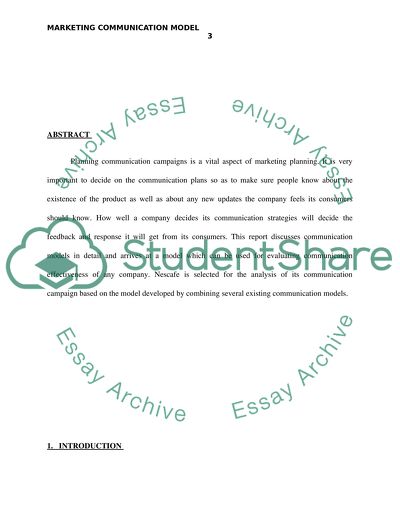Cite this document
(Marketing Communication Model: The Case of Nescafe Study - 1, n.d.)
Marketing Communication Model: The Case of Nescafe Study - 1. Retrieved from https://studentshare.org/marketing/1582754-develop-your-own-marketing-communication-model-derived-from-academic-research-use-this-model-to-analyse-the-marketing-communications-campaign-of-your-chosen-fmcg-nescaf-brand
Marketing Communication Model: The Case of Nescafe Study - 1. Retrieved from https://studentshare.org/marketing/1582754-develop-your-own-marketing-communication-model-derived-from-academic-research-use-this-model-to-analyse-the-marketing-communications-campaign-of-your-chosen-fmcg-nescaf-brand
(Marketing Communication Model: The Case of Nescafe Study - 1)
Marketing Communication Model: The Case of Nescafe Study - 1. https://studentshare.org/marketing/1582754-develop-your-own-marketing-communication-model-derived-from-academic-research-use-this-model-to-analyse-the-marketing-communications-campaign-of-your-chosen-fmcg-nescaf-brand.
Marketing Communication Model: The Case of Nescafe Study - 1. https://studentshare.org/marketing/1582754-develop-your-own-marketing-communication-model-derived-from-academic-research-use-this-model-to-analyse-the-marketing-communications-campaign-of-your-chosen-fmcg-nescaf-brand.
“Marketing Communication Model: The Case of Nescafe Study - 1”, n.d. https://studentshare.org/marketing/1582754-develop-your-own-marketing-communication-model-derived-from-academic-research-use-this-model-to-analyse-the-marketing-communications-campaign-of-your-chosen-fmcg-nescaf-brand.


